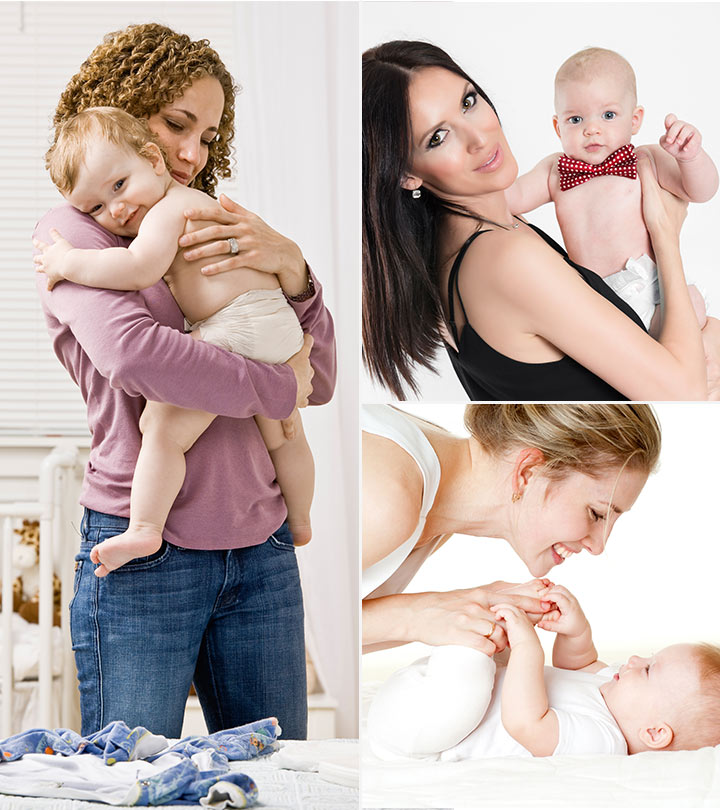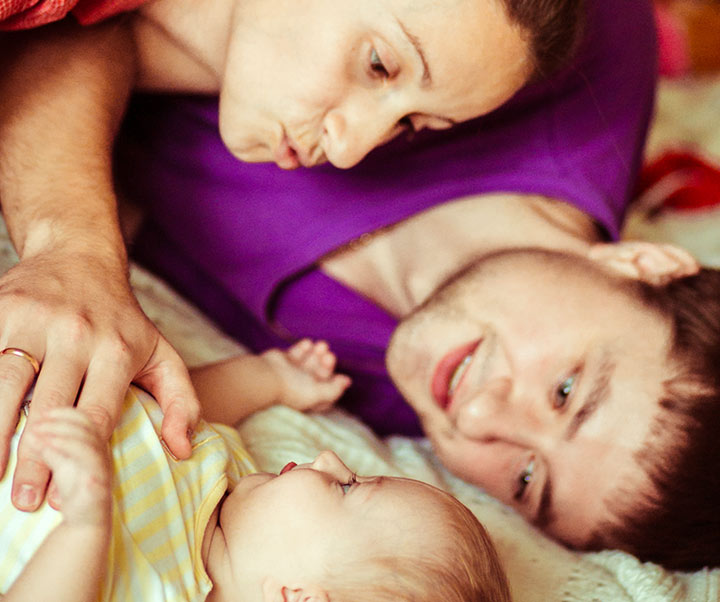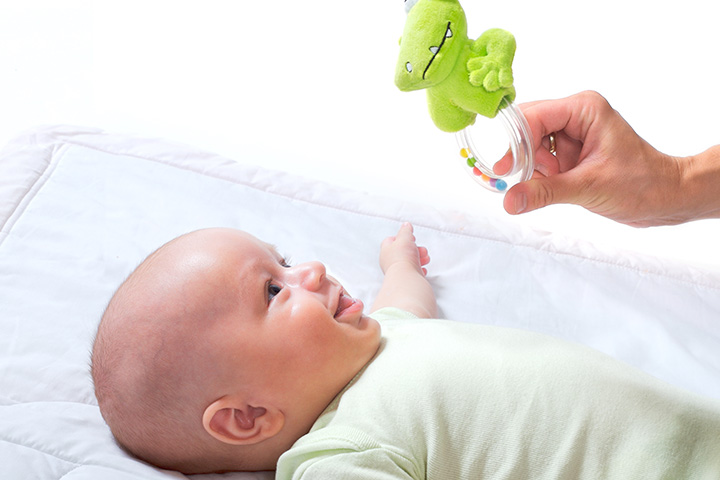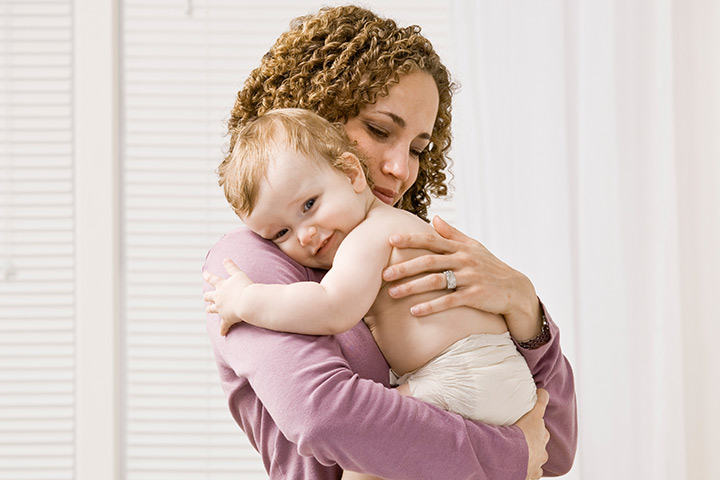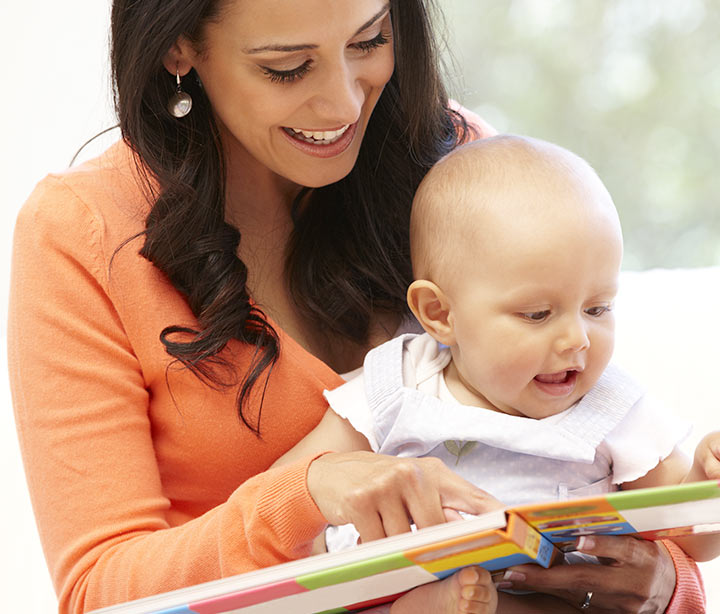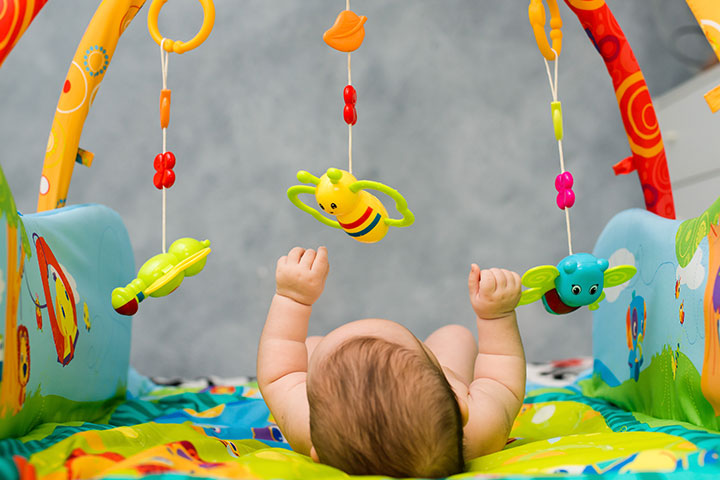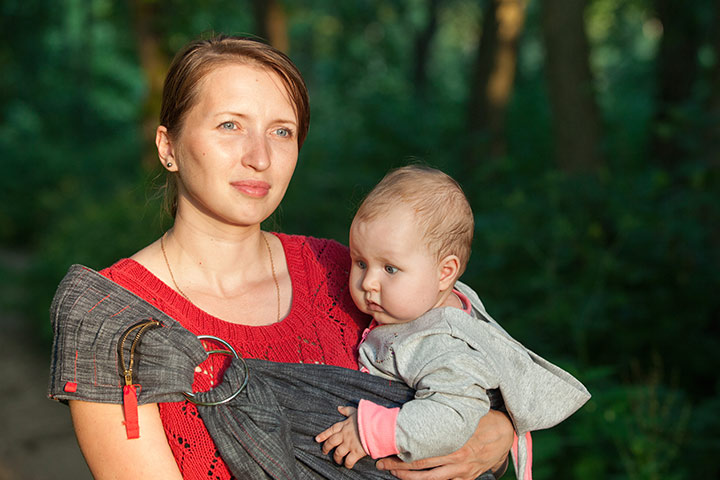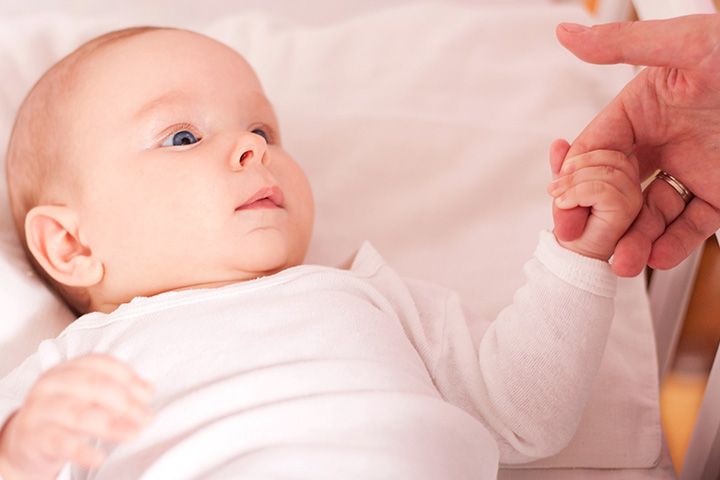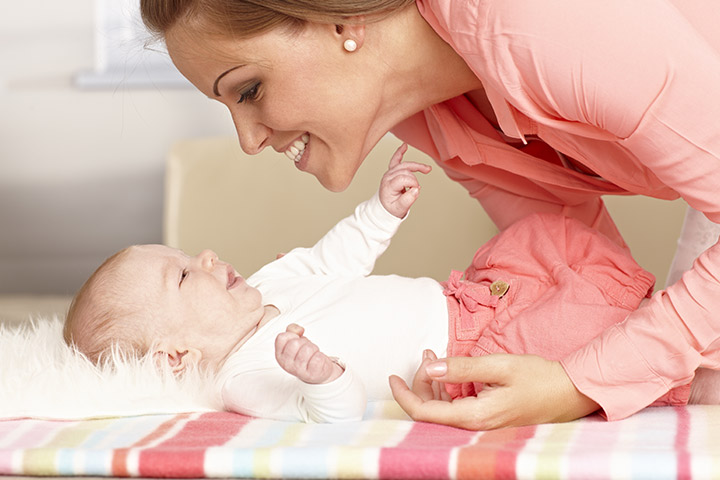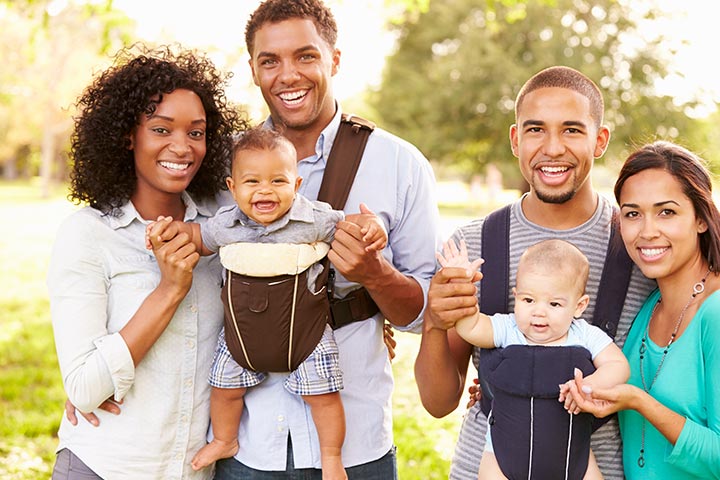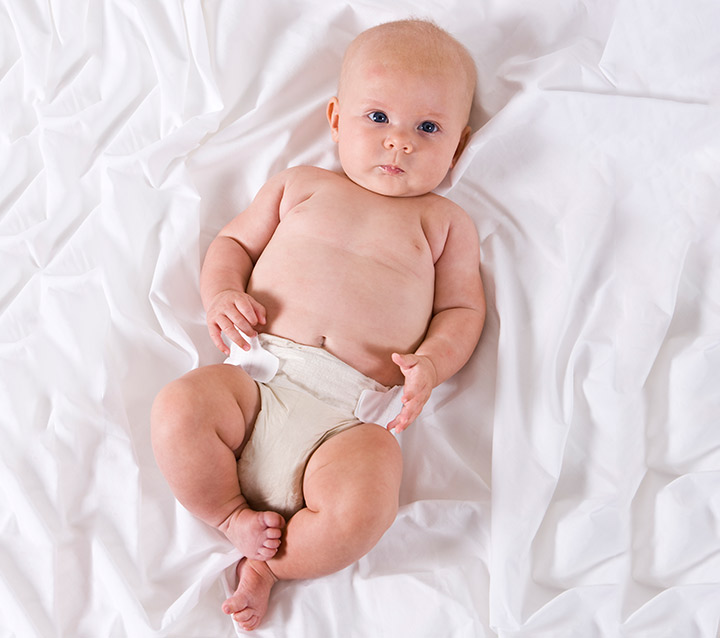2-month-old baby activities are great to introduce your little one to the world of sensory play. Now that the exhausting pregnancy days are over, you’ll feel more physically active and want to be involved in taking care of your baby. If you’re looking for ways to become closer to and strengthen your bond with your baby, playing with them can help do this.
Introduce them to some simple activities and games first so they can gradually move on to more complex ones later. If you are wondering how to get a two-month-old baby to become active beyond their crawling practice, we are here to share a few facts. Below are a few milestones your baby will reach by the time they are two months old, along with a few fun games to engage them in.
Development Of Two-Month Baby
A two-month-old roll and turn to sides while lying on her back. She can move her hands and legs. She, however, needs support to hold her neck and head. The little one will begin to enjoy sounds and develop object recognition as well as hand-eye co-ordination. She starts communicating.
It is important to choose activities suitable for the baby’s development.
Activities For Two-Month-Old Baby
Here are some games and activities you can try.
1. Sing a lullaby
Skills learned: Listening, language
You will need: Just you and your baby
What to do: Hum and sing your favorite number for your little pie. Use varying dynamics in your voice as you sing. The baby tries to respond to your voice. She tries to focus while you sing. See if she is giving any cues in the form of facial expressions or movements to the varying pitches. Experts at UNICEF state that music helps in brain development and soothes them to sleep (1).
2. Wiggle a toy
Skills learned: Visual development, visual tracking
You will need: A small, bright-colored soft toy such as a stuffed animal or a sponge ball
What to do: Let your little one lie on a safe, flat surface. Take a soft toy and slowly bring it close to her from a distance. Move it from one side to the other so that the little one can follow it with her eyes. Gently wiggle or touch your baby with it to gain her attention. The baby will focus on the toy, the pupils will narrow and the baby will show an expression.
3. Dance
Skills learned:Emotional development, bonding, listening skills
You will need: Music
What to do: Turn on the music! Carry your baby carefully against your chest and make cool moves. Move around in sync with the music. As advised by the experts at the University of Georgia, music helps the babies develop an interest in music and strengthens the bonding with parents (2).
4. Massage
Skills learned:Body awareness, bonding
You will need:You and your little one
What to do: Undress your little one to diaper and make her lie down on a safe, flat surface. Ensure that the room is warm and quiet. Now begin to massage in sections. Firmly, yet gently, stroke your baby’s legs, belly, and arms. Give her a nice massage on the back, and around the shoulders to strengthen those areas. Move the little one’s legs as if she were cycling. Clap her arms together or stretch them. The activity helps the baby feel the mother’s touch, which is very important to develop a bond with the mother.
5. Spread smiles
Skills learned:Bonding, social skills
You will need: You and your baby
What to do: Look at the tiny tot. Is she looking at you? Now, look straight into her eyes and smile. Make eye contact. Wondering if your baby understands? Of course! She loves when you pay total attention to her. Each time your baby looks at your smiling face, encourage her to smile back by saying ‘smile’ and smile again. She will pick up the cues very soon. The activity is one of the fun things to do with a 2 month old and also helps the baby get social.
6. Express love
Skills learned:Emotional development
You will need:You and your baby
What to do: This is very simple. Each time you pick your baby, give her a hug and say ‘I love you’. And most important touch her lovingly. You may think she is too young to understand anything, but it will help her with emotional development and understand the importance of touch.
7. Read together
Skills learned:Cognitive, language
You will need:Some books
What to do: Introducing her to the world of books helps in the development of cognitive skills. The Centers for Disease Control and Prevention (CDC) states that reading to a baby when as young as two months helps them develop and understand language (3). Sit down with your baby and place her on your lap. You can help her look at different picture books. Point out the pictures with bright colors and tell what each one is. If it is a story book, read aloud. Storytime helps her develop language skills and concentration. It will also be one of her first learning experiences in vocabulary and speech.
8. Introduce colors and lights
Skills learned: Sensory development
You will need: Bright-colored toys with lights and music
What to do: Hang a bright, colorful toy over your baby’s crib. Attracted by those bright colors, she will try to reach out for them. Bright colors attract the baby and make her feel happy. She will stretch her body in the process, giving her some physical exercise. Playing or exploring toys, lights and music will keep her engaged. You may be surprised to see your little one swatting the objects. The sounds and lights aid in sensory development.
9. Tummy time
Skills learned: Physical skills
You will need:You and your baby
What to do: As your baby grows, it is important to give her enough tummy time every day.
Tummy time helps in two ways. It helps in discharging gasses, and prevents colic. It also helps in neck-holding. However, seek doctor’s advice before doing it.
Tummy time helps her strengthen muscles and then she would slowly learn to roll over and move around.
Kaleigh Carnahan, a mother of four, uses a variety of ways to keep her two-month-old baby engaged in tummy time. On their family YouTube channel, The Carnahan Fam, she shows how she engages her daughter during tummy time. In one of the ways, Kaleigh lies down on her back with her legs up at a 90-degree angle and rests her baby on her legs while facing her, with her head a little past her knees. She encourages this technique as she believes it increases eye contact and interaction between the baby and the parent (i).
Note: Do not place your baby on the tummy for a long time at a stretch, as it can hurt her neck and back or make her feel uncomfortable.
10. Go out for fresh air
Skills learned:Cognitive skills
You will need: You and your baby
What to do: Take your baby out for some outdoor time to breathe in fresh air. Show her the sky, birds, trees, buildings, cars, or anything else. Once you start taking your baby out for a walk, point to different objects and tell what they are. The baby will start taking an interest in the environment.
11. Hold a finger
Skills learned:Bonding, sensory and grasping skills
You will need: You and your baby
What to do: Let your baby hold on to your finger for some time every day. It will help her connect with you and build an emotional bonding. It will also ease her senses. She will feel secure and stay calm, which would, in turn, improve her sleep patterns. It will improve her grasping ability.
12. Talk and interact
Skills learned:Language, listening
You will need: You and your baby
What to do:Talk to your baby using facial expressions. Make sure that she hears you. Keep addressing her in between your conversations. She will understand that you are talking to her. You will be pleasantly surprised when she makes cooing sounds in response to your talk. She will recognize your voice, your tone and improve her attention span. Encourage her to talk more when she coos back. Talk as you continue with your daily chores.
13. Get together
Skills learned: Social
You will need: Gathering with close relatives and friends
What to do:Take your baby out and let her see people. Take her along to family gatherings and get-togethers where she can meet different people and hear various voices. It will help your baby interact better with others and not get confused or scared. It will help her in social interaction.
Remember:The places you take her to should not be too loud or crowded, as she may get agitated, anxious, and scared. Instead, keep the gathering easy and the surroundings soothing and calm. Let her enjoy as she learns to interact with others.
14. Exploration through touch
Skills learned: Tactile
You will need:You and your baby
What to do:A baby can learn a lot through her sense of touch. Therefore, lay her on different textured bed sheets and blankets to explore various surfaces. You can also strip your baby down to nappy if the temperature is warm enough. This will make her feel the surfaces not just with hands but the entire body. Make sure the surface is soft and not rough.
Remember:Supervise your baby for proper breath while carrying out the activities.
15. Playing peekaboo
Skills learned: Object permanence
You will need: A plush toy, you, and your baby
What to do: Place yourself near your little one, making sure they have a clear view of your face. This is especially important for very young babies whose eyesight is still developing. Now, let’s add some playfulness – use your hands, a blanket, or a stuffed toy to cover your face. Build up excitement by revealing your face dramatically while joyfully exclaiming Peek-A-Boo! Keep the fun going, and as your child becomes familiar with the game, invite them to join in. Encourage them to cover their face and do a quick reveal, turning it into a delightful shared experience (4).
This list of simple two-month-old baby activities will surely come in handy when you are in search of things that you want to keep your baby engaged with. During this time, babies are adapting to their environments and also achieving certain milestones such as supporting their heads by themselves and starting to recognize objects. Thus, you can introduce them to these simple activities and help encourage their development process. Also, savor each and every moment of this time and develop a bond with them through such activities.
Key Pointers
- Babies start rolling and turning to their sides at two months of age.
- Engaging in activities can facilitate proper development for your baby.
- Examples of activities for babies include singing lullabies, talking, going outside, wiggling toys, dancing, or massaging.
Wondering how to promote healthy development in your newborn? Here is a video with simple activities that will help your baby grow and develop in the best way possible. Check it out.
